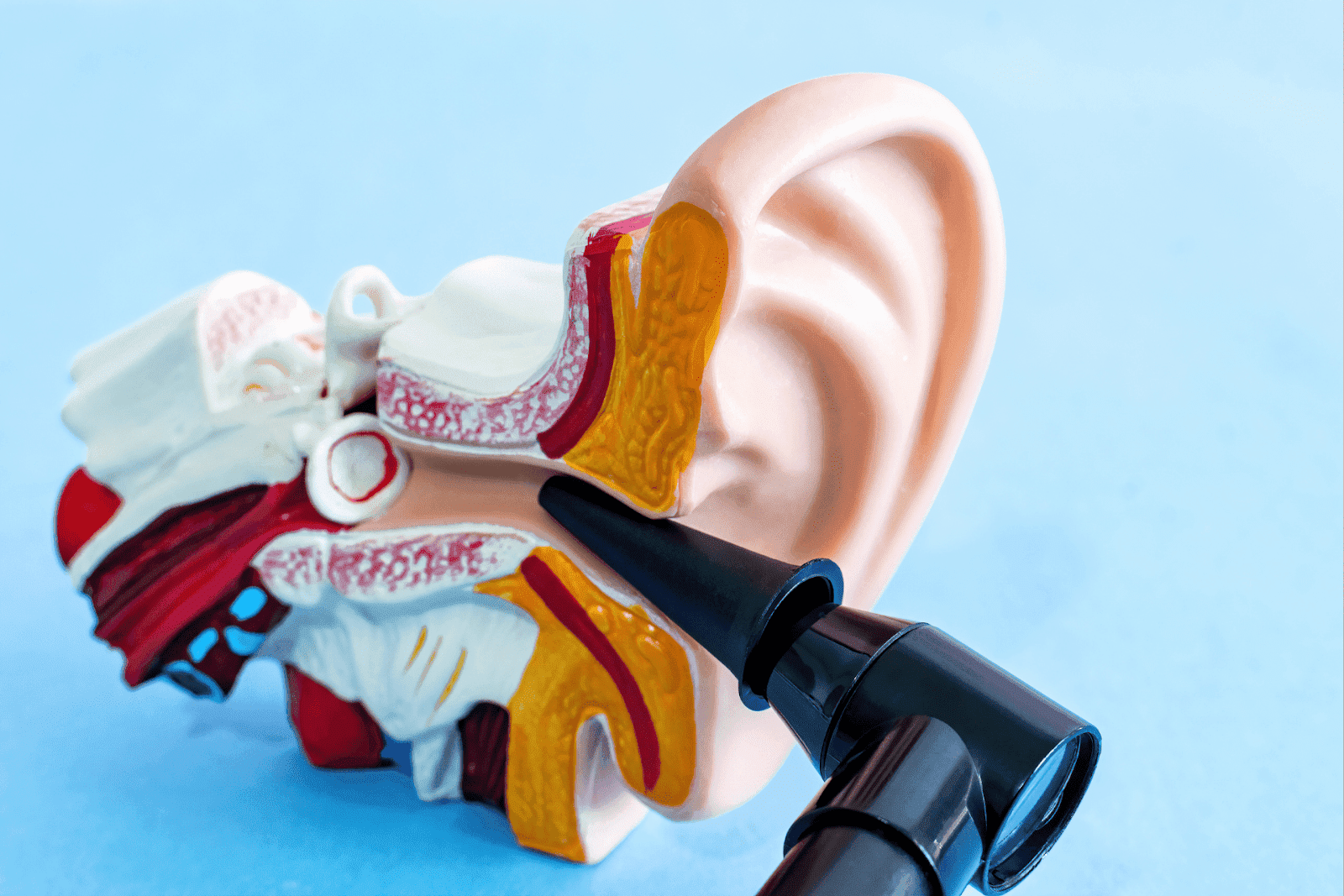Why Is My Nose Twitching?
Nose twitching is a curious and sometimes unsettling sensation that many people experience at some point. Whether it’s a brief spasm or a persistent twitch, the involuntary [...]
Read More
Medically reviewed by Abhijit Bhattacharyya | MD, PhD, MBA, Tufts University School of Medicine - Miami, Florida on August 19th, 2025.
An ear bruise, a swollen, tender, discolored area of the outer ear following a hit, fall, sports collision, or other trauma, might look minor at first. But the anatomy of the ear is delicate, and early signs that seem like a simple bruise can sometimes hide more serious problems. This guide explains common causes, how to spot warning signs, what to expect from diagnosis and treatment, and when to reach out for medical care, including convenient options for fast evaluation and follow-up.
An “ear bruise” is a lay term that typically refers to soft-tissue injury to the external ear (the pinna) that results in pain, swelling, and skin discoloration. Medically, this can be a superficial contusion, tiny blood vessels damaged under the skin, or it can indicate deeper problems such as a hematoma (a pocket of clotted blood), cartilage injury, or even fractures of nearby bones in severe trauma.
The pinna is mostly cartilage covered by a relatively thin layer of skin and little fat. Because cartilage has a limited blood supply, injuries can heal slowly and are more prone to complications than bruises on parts of the body with richer circulation.
 Common Causes of Ear Bruises
Common Causes of Ear BruisesSeveral situations commonly lead to bruising of the outer ear:
Sports injuries and contact: Boxing, wrestling, rugby, and martial arts are classic examples where repeated blows to the ear can cause contusions and hematomas (often called "cauliflower ear" when untreated).
Falls and accidents: Trips, bicycle falls, or vehicle collisions can produce blunt force trauma to the ear.
Blunt trauma: A single hard strike, from a hand, ball, or other object, can bruise the ear.
Piercing or local procedures: Recent ear piercings or minor surgical work can result in localized bruising.
When the ear looks bruised after trauma, it is important to consider a spectrum of conditions:
This is the most common and least serious. Small blood vessels under the skin break, causing tenderness and discoloration without structural damage to the cartilage.
An auricular hematoma is a collection of blood between the perichondrium (the tissue that surrounds the cartilage) and the cartilage itself. It often presents as a fluctuant, tender swelling on the outer ear after blunt trauma. If not drained promptly, it can lead to permanent deformity known as cauliflower ear due to scar tissue formation.
Damage to the cartilage or its blood supply raises the risk of infection (perichondritis) and poor healing. Signs of infection include increasing redness, warmth, fever, and worsening pain.
Cuts that go through the skin into deeper tissue, or partial tearing of the ear, require careful repair to minimize scarring and preserve ear shape.
With high-energy trauma (e.g., a motor vehicle collision), pain and bruising around the ear could accompany fractures of the temporal bone or base of the skull. These are serious and often have other signs such as hearing changes, clear fluid from the ear or nose (suggesting cerebrospinal fluid leak), or neurological symptoms.
Many simple ear bruises get better with home care. However, certain signs should prompt urgent or emergency evaluation:
Rapidly increasing swelling, severe pain, or a tense, fluctuant swelling suggest an auricular hematoma that may need drainage.
Any signs of infection: spreading redness, fever, increasing pain, or pus.
Hearing loss, ringing (tinnitus), vertigo, or dizziness after the injury.
Clear, watery drainage from the ear or nose following head trauma.
Visible deformity, large lacerations, or exposed cartilage.
Evaluation begins with a careful history and physical exam. Important details include how the injury happened, time since injury, progression of symptoms, and any prior ear procedures or piercings.
The physical exam inspects the outer ear for swelling, discoloration, laceration, and fluctuance (suggesting fluid). Otoscopic examination checks the ear canal and eardrum for blood, perforation, or other injury. If there are concerns for deeper injury or head trauma, imaging such as CT may be ordered.
Imaging is not routine for a simple contusion. CT scans are reserved for cases with high suspicion of skull or temporal bone fracture, penetrating injury, or when there are neurologic symptoms. Ultrasound can be helpful in some settings to confirm a fluid collection and guide drainage of a hematoma.
Treatment depends on the type and severity of injury. For straightforward bruises without a hematoma, home measures may be enough. For hematomas, infections, or lacerations, medical treatment is required.
Ice: Apply a cold pack wrapped in a cloth for 10–15 minutes every 1–2 hours during the first 48 hours to reduce swelling and pain.
Elevation: Keeping the head elevated decreases swelling.
Analgesics: Over-the-counter pain relievers such as acetaminophen or NSAIDs (ibuprofen) are usually effective unless contraindicated.
Watchful waiting: Monitor for signs of worsening, infection, or increasing deformity.
An auricular hematoma often needs prompt drainage to prevent permanent deformity. Drainage typically involves aspiration or incision and evacuation of the clot, followed by a compression dressing to prevent reaccumulation. This should be done by a trained clinician; delaying treatment increases the risk of cartilage scarring and cauliflower ear.
Sometimes, antibiotics are prescribed to reduce the risk of infection after drainage, especially when the skin barrier is broken.
Significant lacerations require wound cleansing, careful repair (often in layers to preserve shape), and tetanus prophylaxis as necessary. Exposed cartilage increases infection risk and may require specialty care.
If infection is suspected (perichondritis), antibiotics that cover Pseudomonas and Staphylococcus species are commonly used. In severe infections or necrotizing cases, urgent specialist intervention is required.
Ignoring ear trauma can lead to several problems:
Permanent deformity (cauliflower ear) from an untreated hematoma and scar formation.
Chronic pain or sensitivity.
Hearing problems, if the ear canal or middle ear is involved.
Recurrent infections or persistent drainage.
Cosmetic concerns requiring reconstructive surgery.
Prevention is context-specific. In contact sports, wearing properly fitted headgear or ear guards reduces the risk of auricular trauma. For all injuries, immediate measures help reduce complications:
Apply ice to limit swelling within the first 48 hours.
Seek prompt medical attention for painful, tense, or enlarging swellings.
Avoid blindly puncturing or squeezing any collection at home, as this increases infection risk and may worsen outcomes.
After initial treatment, follow-up ensures proper healing and identifies complications early. If a hematoma was drained, the dressing is usually checked within 24–48 hours, and repeat visits help confirm that fluid has not reaccumulated. If antibiotics were prescribed, symptom improvement should be apparent within 48–72 hours.
Persistent cosmetic deformity or chronic issues may require referral to an otolaryngologist (ENT) or plastic surgeon experienced in ear reconstruction.
Not every ear bruise requires an emergency department visit. For many minor injuries, a prompt telehealth visit can clarify severity, recommend immediate self-care, and direct the patient to in-person care only when necessary.
Doctronic.ai offers free AI doctor visits on its website, providing fast, evidence-based guidance drawn from the latest peer-reviewed medical literature. For telehealth video visits with licensed clinicians, Doctronic provides low-cost appointments (under $40) available 24/7 across all 50 states, which can be especially helpful for triage, follow-up, and arranging urgent in-person care if needed.
Telehealth works well for initial assessments: it can determine whether a hematoma, laceration, or infection is likely and advise whether urgent drainage or an in-person emergency evaluation is needed. Telemedicine also streamlines follow-up care after an in-office procedure.
Immediate emergency evaluation is appropriate for large, rapidly expanding swelling, severe head trauma, signs of skull fracture (such as clear fluid leak or altered consciousness), significant bleeding that won’t stop, or any neurologic symptoms. For non-emergent but concerning signs, like a tense hematoma without severe systemic symptoms, urgent care or an ENT clinic can often manage the problem.
Doctronic does not provide lists of local urgent care locations or their hours. However, the service can help decide whether an urgent visit is needed and can arrange low-cost telehealth appointments at any hour via Doctronic.ai.
Several common scenarios show how outcomes differ depending on the timing of care. A wrestler who ignores a slowly enlarging auricular hematoma after practice may develop permanent cartilage deformity requiring surgical correction. Conversely, a person who has a hematoma drained within 24–48 hours and wears proper compression almost always avoids deformity.
In lower-energy injuries, such as a child who falls and has a small contusion with modest swelling, careful home care and observation usually lead to full recovery in a few days to weeks. The key difference is early recognition of warning signs that indicate a need for intervention.
When children sustain ear injuries, caregivers should watch for loud crying, refusal to move the head toward the injured side, bloody drainage from the ear, or changes in hearing or balance. Because children may not always communicate symptoms clearly, erring on the side of a quick medical check via telehealth or urgent care is reasonable.
For athletes, remove the child from play after any significant ear blow until a clinician clears them. Repeated trauma to the ear increases the risk of cumulative damage.
If an auricular deformity develops, options range from minor outpatient procedures to more involved reconstructive surgeries, depending on the extent of cartilage loss and scarring. Reconstruction is best managed by specialists with experience in otologic or plastic surgery; outcomes are generally good but depend on the timing and complexity of the deformity.
An ear that looks bruised after injury can be a simple contusion, but it can also signal an auricular hematoma, cartilage injury, or infection. Early evaluation matters: prompt drainage of hematomas and appropriate antibiotic therapy for infections reduces risks of permanent deformity and other complications. Telehealth services, including AI-driven triage and affordable video visits, offer convenient initial evaluation and follow-up for many patients.
For a rapid, evidence-based check on whether a bruise needs urgent care or can be managed at home, consider using Doctronic’s free AI doctor visit and low-cost 24/7 telehealth video appointment. Over 10 million people have used Doctronic’s system, which combines modern medical knowledge with personalized follow-up to help patients get the care they need quickly.
 Resources and Next Steps
Resources and Next StepsIf the ear injury involves severe pain, rapidly expanding swelling, drainage from the ear, hearing changes, or signs of infection, seek immediate medical attention. For non-emergent questions or follow-up after initial first aid, a telehealth visit through Doctronic.ai can provide fast guidance and arrange in-person care when necessary. Remember that early action prevents many of the long-term complications associated with ear trauma.
If you’re unsure whether that bruise is a simple contusion, an auricular hematoma, or something that needs prompt care, Doctronic, the #1 AI Doctor, can help right now. Our AI synthesizes the latest peer‑reviewed medical evidence to give fast, smart, and personalized guidance, and you can follow up with an inexpensive (<$40) 24/7 video visit with a licensed clinician in any state. Get an immediate, evidence‑based check on your ear injury and clear next steps from a tool millions trust. Skip the line. Talk to an AI Doctor Now, for free.
Nose twitching is a curious and sometimes unsettling sensation that many people experience at some point. Whether it’s a brief spasm or a persistent twitch, the involuntary [...]
Read MoreAn itchy sensation on the roof of the mouth can be uncomfortable and puzzling. This symptom can arise for various reasons, ranging from mild irritations to underlying health [...]
Read MoreUnderstanding your ovulation cycle can be a game-changer when trying to conceive or simply wanting to understand your body better. One of the most reliable tools to track [...]
Read More